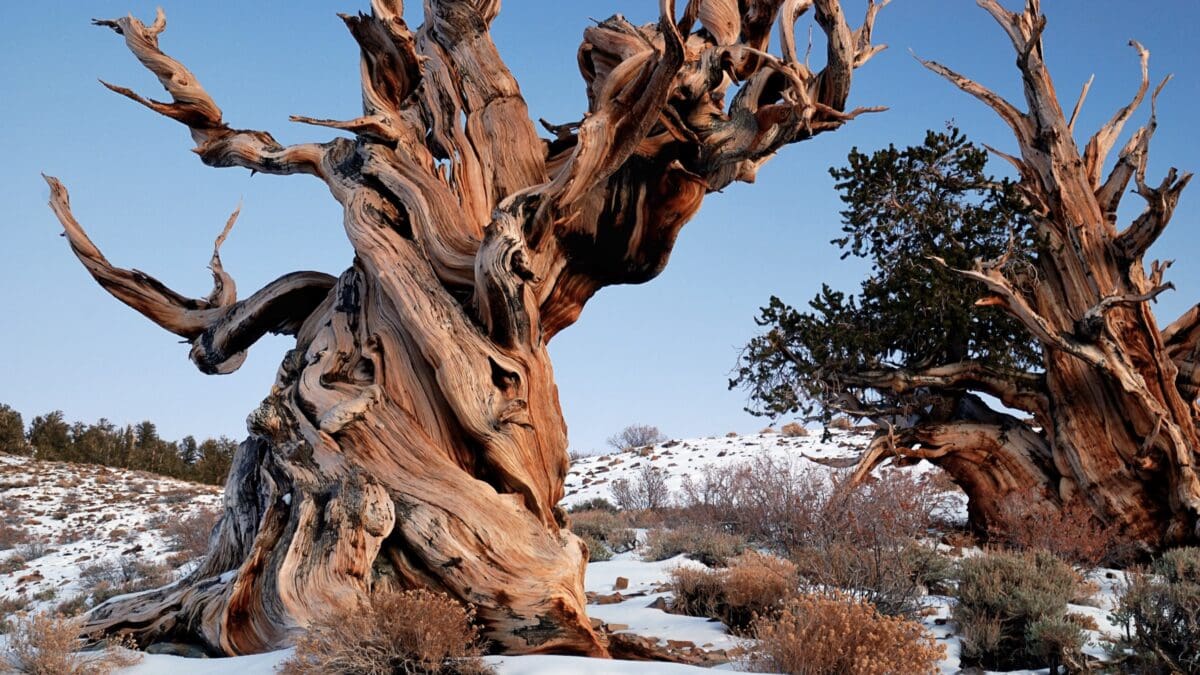The bristlecone pine tree named Methuselah, located in the harsh White Mountains of California, is the world’s oldest known living organism, surviving for about 5,000 years. Its longevity is largely due to adaptations that allow it to thrive in extreme conditions, barren, cold, dry, and windy.
These adaptations, such as slow growth, dense wood, and a unique internal structure, not only help it endure the environment but also protect it from threats like bacteria, fungi, beetles, and wind damage, enabling it to live far longer than most trees.
Methuselah’s slow growth, at less than a hundredth the speed of other trees, results in tightly packed cell walls that make its wood resistant to decay and pests. Its subdivided internal architecture allows nutrients to flow through thin sections, so damage to one part doesn’t kill the entire tree. Bristlecones face very little competition in the high-pH soil of the White Mountains as well, and their isolation reduces the risk of devastating forest fires, further contributing to their extraordinary lifespan.
This pattern of extreme environments fostering long life extends beyond bristlecones to other organisms. Tubeworms in deep-sea hydrocarbon seeps, for example, live up to 170 years with little competition. Greenland sharks’ slow metabolisms allow them to survive for 400 years in frigid waters, and Welwitschia plants in the Namib desert maintain a simple structure to live over 2,000 years.

